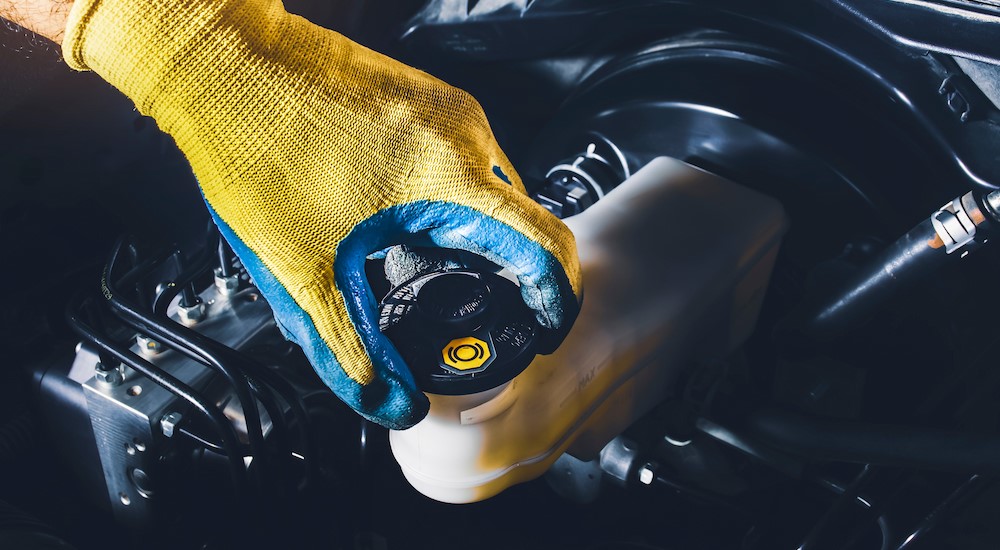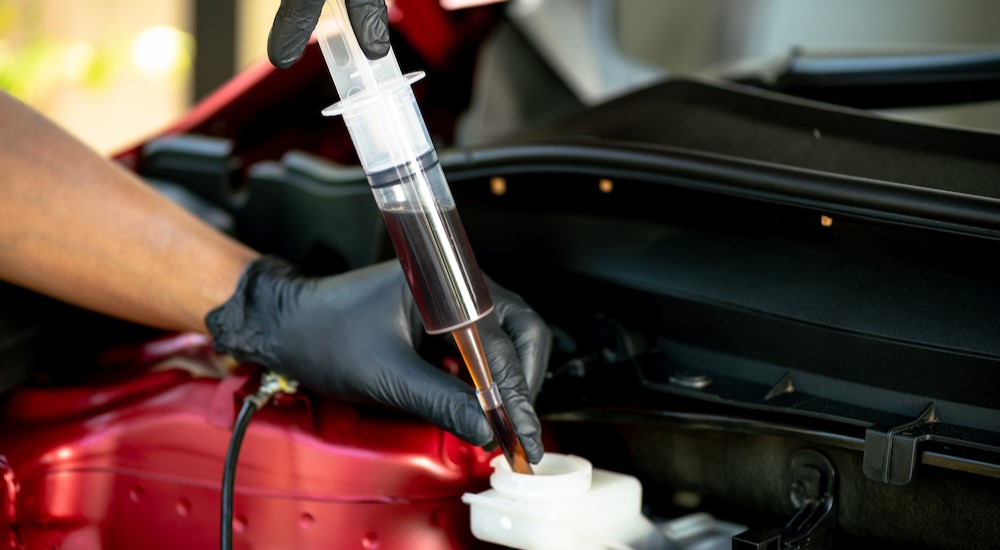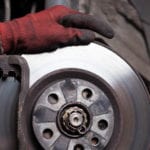That’s a great question with a simple answer: Yes. Beyond this reductive point, however, are a few more things that you should consider when it comes to your brake fluid and making sure your vehicle can safely slow down and stop. When something goes wrong with your brakes, that’s a recipe for disaster, which is why it’s so important you have proper brake service performed on your vehicle when appropriate. Let’s look at what your brake fluid does, how and when you should have it inspected, and what to do when there’s a problem.
What Is Brake Fluid?
Your car, truck, or SUV uses a hydraulic system for its brakes. You press the pedal to slow or stop your vehicle with a reasonable amount of force. A master cylinder multiplies that force, and then hydraulic pressure through brake fluid in lines and hoses transfers that enhanced force to your vehicle’s brakes. This is why you can quickly stop a massive SUV that weighs thousands of pounds using your foot without superhuman strength.
The key to this is the hydraulic pressure, which is transferred through the fluid in your brake system. This is known, as you might have guessed, as brake fluid, and it’s essential that it can do its job properly. The fluid in your brake line is mostly made of glycol ether and additives designed to maintain a proper pH balance and anti-corrosion chemicals to help avoid rust and damage to metal parts like steel brake lines, wheel cylinders, and more. Over time, however, the brake fluid absorbs moisture, and some of those chemicals will be replaced by water that shouldn’t be there. It just happens, and you can do nothing to prevent this, which is why regular brake fluid maintenance is required.
How Do You Check Brake Fluid?
Checking your brake fluid is all about seeing its condition in terms of its overall chemical composition and how much water has made its way into the fluid. You can have this done at an auto shop or a service center at the dealership of your choice. You can also do this at home easily, but you need a few special things. Either way, the fluid is checked by opening the brake fluid reservoir under your vehicle’s hood. A test strip can then be dipped into this fluid to check its condition.
A visual inspection can tell you if the brake fluid is becoming murky or discolored, but this isn’t a guarantee of when the fluid needs to be replaced. The test strips, which you can buy or your service center will use, indicate if any copper is in the brake fluid. Copper enters the fluid as the anti-corrosive additives start to break down, so the presence of copper means your brake fluid is getting old and needs to be replaced. A moisture meter can also be dipped into the brake fluid to check how much water it has absorbed. These two tests will tell you if it’s time for your brake lines to be flushed and the fluid replaced.
How Often Should You Check Brake Fluid?
This largely depends on what kind of vehicle you have. Most manufacturers provide information for when routine service should be performed, such as oil changes and tire rotations, including a brake fluid inspection. For the most part, about every two or three years or every 20,000 to 30,000 miles is pretty standard for checking your brake fluid. If you have a mechanic suggest more frequent brake fluid flushing or replacement, they might be trying to get extra money out of you, but routine inspections are a good idea.
Does Brake Fluid Need to Be Replaced?
If copper is found in significant amounts or too much water has made it into your brake fluid, it must be flushed out and replaced with fresh fluid. Failing to do this will cause the moisture in your brake line and lack of anti-corrosives to damage other parts of your brakes and lead to degraded braking performance. This can have potentially disastrous consequences, but it typically means your brake components must be replaced sooner than usual. Flushing your brake lines and replacing your brake fluid is relatively quick and inexpensive. Having new brakes installed takes longer and costs a lot more money.
This is one of those instances where preventative care is much better in the long run since it lets you avoid much bigger problems. That’s generally the case when it comes to vehicle maintenance and service, which is why routine inspections and similar things are always worth it. Best of all, checking your brake fluid at home is quite easy once you know how, and things like test strips and moisture meters aren’t expensive. Alternatively, you can do a brake fluid check simultaneously with other maintenance items like an oil change or tire rotation. When it’s time for fresh brake fluid, however, I suggest always letting a professional handle it to ensure everything is in good shape and you’re safe on the road.






